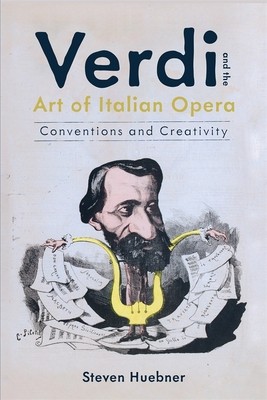
- We will send in 10–14 business days.
- Author: Steven Huebner
- Publisher: University of Rochester Press
- ISBN-10: 1648250408
- ISBN-13: 9781648250408
- Format: 15.2 x 22.9 x 1.9 cm, kieti viršeliai
- Language: English
- SAVE -10% with code: EXTRA
Reviews
Description
Verdi's art emerged from a rich array of dramatic and musical practices operative in the Italy of his day. Drawing the reader into his creative world, this study (translated from the French original by the author himself) begins where Verdi began when it came time to set notes to paper: the libretto. Designed for the non-Italophone reader, Steven Huebner's Verdi and the Art of Italian Opera explains key principles of Italian poetry that shaped his music. From there, Huebner outlines the various musical textures available to the composer, including an exploration of the characteristics of recitative and aria. Working outward, subsequent chapters explore the syntax of Verdi's melodic writing and the larger-level forms that he used. A concluding chapter considers ways of conceiving musical unity in his operas.
Huebner's long-needed study provides significant insights into Verdi's musico-dramatic strategies, pulling together-and making more easily accessible-principles and insights that are spread widely across the scholarly literature. Verdi remains by far the most performed opera composer on world stages today: singers, vocal coaches, stage directors, and opera lovers more generally will welcome this compact perspective on his art.EXTRA 10 % discount with code: EXTRA
The promotion ends in 23d.19:46:38
The discount code is valid when purchasing from 10 €. Discounts do not stack.
- Author: Steven Huebner
- Publisher: University of Rochester Press
- ISBN-10: 1648250408
- ISBN-13: 9781648250408
- Format: 15.2 x 22.9 x 1.9 cm, kieti viršeliai
- Language: English English
Verdi's art emerged from a rich array of dramatic and musical practices operative in the Italy of his day. Drawing the reader into his creative world, this study (translated from the French original by the author himself) begins where Verdi began when it came time to set notes to paper: the libretto. Designed for the non-Italophone reader, Steven Huebner's Verdi and the Art of Italian Opera explains key principles of Italian poetry that shaped his music. From there, Huebner outlines the various musical textures available to the composer, including an exploration of the characteristics of recitative and aria. Working outward, subsequent chapters explore the syntax of Verdi's melodic writing and the larger-level forms that he used. A concluding chapter considers ways of conceiving musical unity in his operas.
Huebner's long-needed study provides significant insights into Verdi's musico-dramatic strategies, pulling together-and making more easily accessible-principles and insights that are spread widely across the scholarly literature. Verdi remains by far the most performed opera composer on world stages today: singers, vocal coaches, stage directors, and opera lovers more generally will welcome this compact perspective on his art.

Reviews